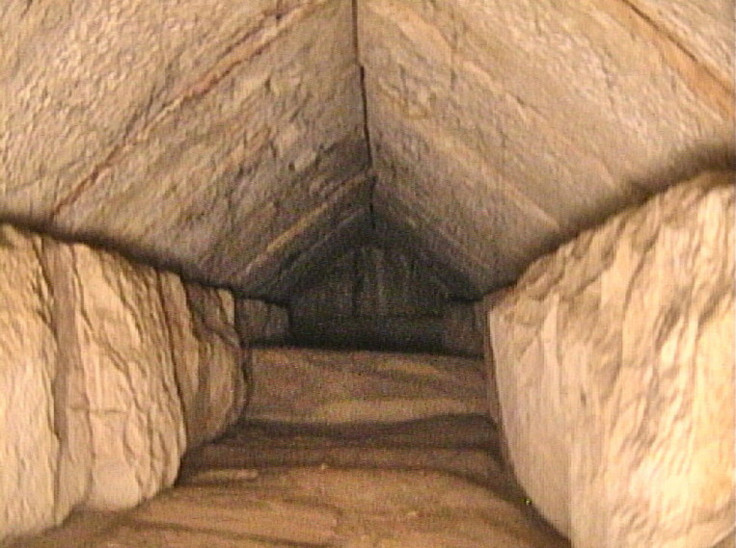Great Pyramid of Giza: Nine-metre long mysterious corridor discovered inside

KEY POINTS
- The Pyramid of Giza is the largest pyramid in Egypt
- The Pyramid is the oldest of the Seven Wonders of the Ancient World
- The hidden corridor is nine metres (30 feet) long and likely slopes upwards
Scientists have identified a secret hidden corridor inside the Great Pyramid of Giza.
A hidden corridor has been discovered close to the main entrance of the 4,500-year-old Great Pyramid of Giza, and this could lead to further findings, Egyptian antiquities officials said on Thursday.
The officials stated that the concealed passageway was discovered near the main entrance of the Great Pyramid of Giza which dates back 4,500 years ago.
Details about the newly discovered hidden corridor
The Great Pyramid of Giza is the largest pyramid in Egypt and the tomb of Fourth Dynasty pharaoh Khufu. The pyramid is the oldest of the Seven Wonders of the Ancient World, and the only one to remain largely intact.
The hidden corridor is nine metres (30 feet) long and likely slopes upwards. What lies ahead of the corridor remains a mystery as researchers are yet to discover where or what it leads to. According to authorities, they were unable to find any further information.
The latest discovery within the pyramid was made under the "Scan Pyramids" project which was launched in October 2015 by Egypt's antiquities ministry. They seek to uncover the mysteries inside the massive structure while avoiding the usage of invasive drilling methods.
The scientists have been using "non-invasive and non-destructive surveying techniques" like muons radiography, infrared thermography, 3D simulations, and cosmic-ray imaging to peer inside the structure. Muons radiography was developed by Nagoya University in Japan.
Previous discoveries made in the pyramid by scientists
The international research team used an imaging technique based on cosmic rays to analyse a cavity behind the north face of the pyramid that was discovered in 2016. Their findings were announced at a news conference with Egyptian officials outside the 456-foot-tall pyramid on Thursday.
In 2017, scientists used the same technique to identify "void" or "cavity" called the Grand Gallery, one of a series of passageways and chambers. They believe it was the first major inner structure to be uncovered in the pyramid since the 19th century.
In addition to the Grand Gallery, archaeologists previously found the king's chamber, located roughly around the centre of the pyramid, and a smaller queen's chamber nearby.
"This discovery, in my opinion, is the most important discovery of the 21st century," said Zahi Hawass, Egypt's former antiquities minister, as reported by NBC News.
According to officials, the narrow, nine-metre-long passage-like space which was constructed as royal burial chambers around 2560 B.C., was most likely designed for "protecting or reducing the pressure on something beneath it."
Mostafa Waziri, the secretary general of Egypt's Supreme Council of Antiquities stated that it might be something else but that they would figure it out "very soon."
The discovery could lead to further knowledge about the mysterious pyramid
According to an article published by the Nature journal on Thursday, the discovery could contribute to finding more knowledge about the construction of the pyramid and may also aid in understanding the purpose of a gabled limestone structure that's stationed in front of the corridor.
"The discovery today tells us there is something important to be discovered soon under that tunnel, which could be the real burial chamber of Khufu," Hawass added.
The Great Pyramid, which is also known as Khufu's Pyramid, was built as a monumental tomb on the Giza plateau on the outskirts of Cairo by Khufu around 2560 B.C. It reached a height of 146 metres (479 feet), during the reign of Pharaoh Khufu, or Cheops and presently stands at 139 metres after having most of its white limestone casing removed.
However, even today, many details about the structure and history of the 4,500-year-old pyramid still remains shrouded in mystery. The Great Pyramid was the tallest structure built by humankind until the Eiffel Tower in Paris was built in the year 1889.
© Copyright IBTimes 2024. All rights reserved.





